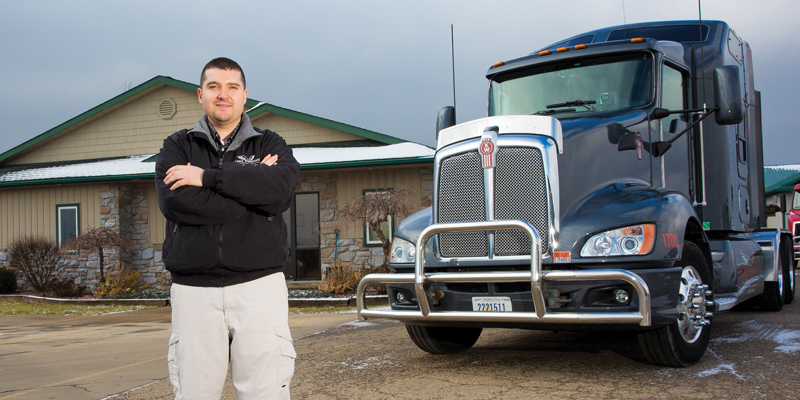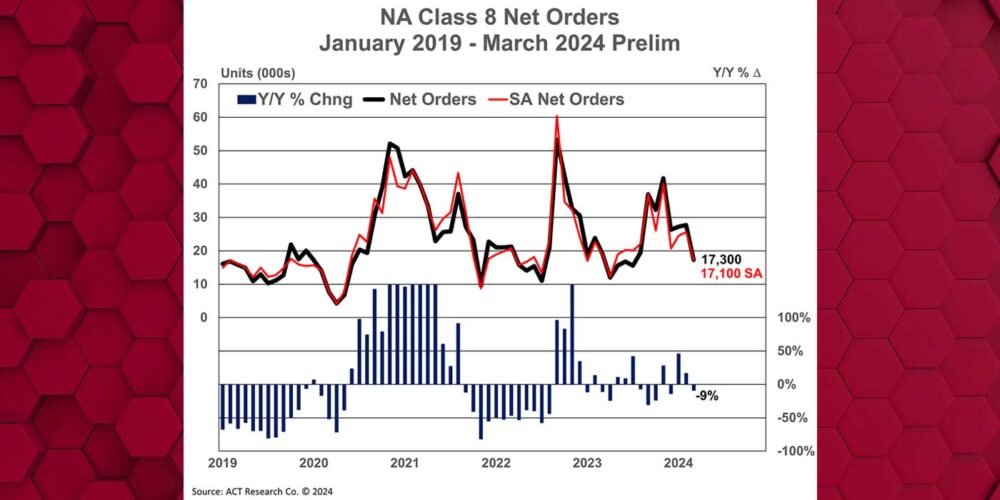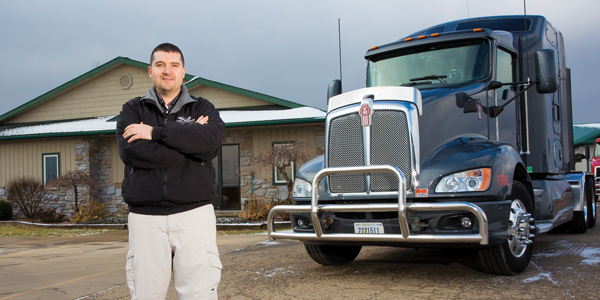
“Cows must be milked two or even three times a day, seven days a week, so we never have a day off,” says Gene Shirk, vice president
Primarily, Eagle hauls raw milk from farms and plants to production facilities. The niche carrier also works with organic and smaller farms, sometimes requiring pick-ups at as many as 20 locations to fill a trailer. In addition, it handles some loads of liquid sugar.
Founded in 1991 and based in Goshen, Ind., Eagle Transport also hauls some loads as far as Texas and fields 8,200-gal. tankers on dedicated lanes under overweight permits, and recently started doing some flatbed work.
“Since farms have contracts with large processors, which have a multitude of processing facilities, it’s not uncommon to have processors call and request a delivery change mid-stream,” Shirk says. “It happens all the time, but with our fleet management technology we’re ready for it.”
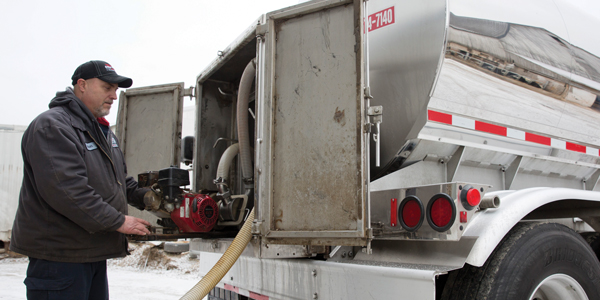
Those solutions at Eagle Transport include the BOLT System web-based fleet management platform it has been using since 2013 and, more recently, Omnitracs ELDs. “Before, we had a manual system using spreadsheets, and constant phone calls were needed between drivers and dispatch to confirm deliveries and routing for pick-ups,” Shirk explains. “That left room for inefficiency and errors, and it took a lot of manpower to manage the business.
“Today, that’s all changed,” Shirk continues. “Managing our business is much less labor-intensive now, and it all starts by using
Once the data is inputted using the Omnitracs ELDs and inputs from drivers, pickups and deliveries are
“When there is a ‘cow-driven change,’ the driver enters that through the Omnitracs system or calls our dispatcher,” Shirk adds. “In turn, that triggers an update to the scheduled program for the remaining planned period.”
Once
“With visibility in the platform into when a driver is unloading and the number of driving hours that are still available under hours-of-service rules,” Shirk says, “we can easily look at farm and driver schedules. That lets us determine if our driver can pick up a new load and either deliver to the
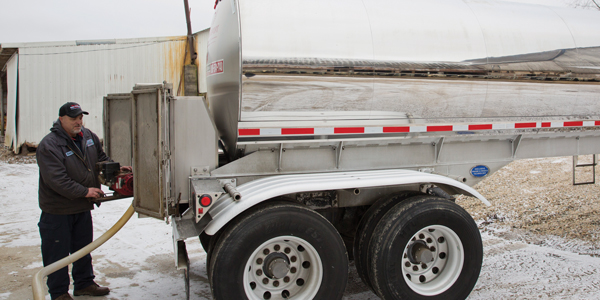
Tight time restrictions
According to Shirk, this step is critical because there are very tight restrictions on how long milk can stay in a trailer. If the time restriction is exceeded, the entire load has to be disposed of and it goes to waste.
“Due to having multi-day farm schedules and real-time data from Omnitracs in the BOLT platform, we can execute a series of trailer swaps, or a stand-by driver can be called in to meet the time restriction schedules,” Shirk explains. “The key to making this work is dynamic scheduling driven by the ability to constantly monitor real-time movements and see what assets are available on an exception basis.
“We can also use the BOLT platform to see the status of all loads in our operation,” Shirk continues. “Location tracking through Omnitracs occurs approximately every 15 minutes, including updating truck progress and the current trip route. It’s very easy to monitor as the BOLT screen will change colors to reflect ‘on time,’ ‘possibly late’ and ‘definitely late’ load status. That gives us a level of service we never had before because we can now update our customers so they know exactly what’s happening with their loads.”
Eagle Transport also leverages information on what’s happening within its own business. “We know exactly when milk was picked up and delivered, the amount of milk in the load and the work history of our drivers,” Shirk reports. “We can see how many miles were driven empty versus loaded, and now we can reward drivers with bonuses based on the information we have available.”
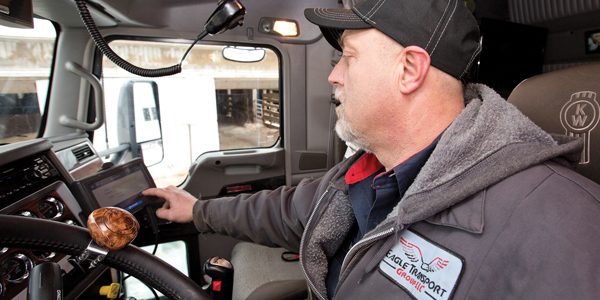
Driver focus
Eagle’s drivers, Shirk says, are part of the carrier’s focus when it comes to
“With everything we have to offer, we’re able to hire drivers mostly by word of mouth,” Shirk says. “We offer competitive pay, benefits and flexible home time to retain drivers and maintain a family-style atmosphere where drivers are treated like a family member instead of a number. Also, we ensure that all employees have easy access to the owners and management team to resolve issues if they arise.”
All told, Shirk says that milk hauling is a high-stress and very competitive business. “Dairy farm margins are very thin, so for milk
Eagle Transport Tractor Specifications
- Model: Volvo VNL, Peterbilt Model 579
- Engine: Volvo D13, Cummins ISX
- Transmission: Eaton Fuller RTLO-18913A, 13-speed
- Driveline: Meritor, Dana Spicer
- Wheel Seals: Rev Max HD RM-D02
- Brakes: Coman Centers RK8354707Q
- ABS: Meritor WABCO
- Wheels: Alcoa LVL1
- Tires: 11R22.5 Bridgestone M760, Michelin XLED
- 5th Wheel: SAF-Holland FW35
- Air Compressor: WABCO
- Air Dryer: Meritor SP1200
- Air Cleaners: Fleetguard
- Fan Clutch: Horton
- Batteries: Deka
- Starter: Delco Remy 39MT
- Alternator: Delco Remy 28SI
- Lighting: Truck-Lite, Grote
- Seats: Bostrom, Seats Inc.
- Fuel Tanks: Dual 150 gallon
Eagle Transport Trailer Specifications
- Model: Walker
- Capacity: 6,200 gal.
- Landing Gear: Jost A400
- Axles & Suspension: Hendrickson Intraxx
- Oil Seals: Rev HD RM-T03
- Brakes: Coman Centers RK8354707Q
- ABS: Meritor WABCO
- Tires: Bridgestone R197, Bandag B197, BFG TR144
- Wheels: Alcoa LVL1
- Lighting & Electrical: Truck-Lite, Grote

